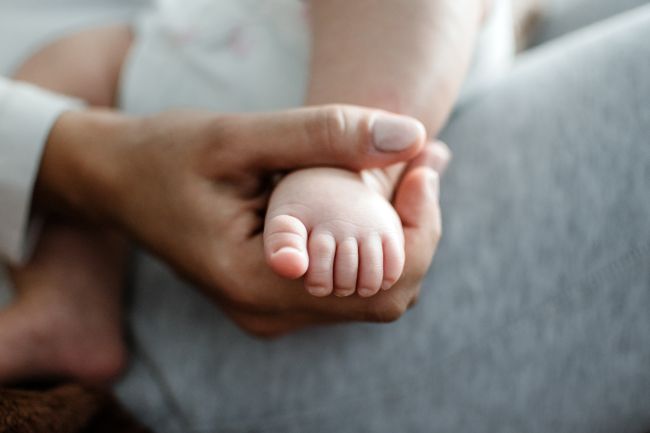
Impact of The Gut and Genital Microbiome on Fertility
Infertility is a common problem, affecting 15% of couples worldwide.1 We can chalk some of this up to couples waiting until they’re older to conceive, but other environmental factors also play a role. There is clear data that fertility may be an independent marker of overall health status in both women2 and men3.
Another marker of health status with gaining research momentum is the microbiome. The microbiome is the collection of microorganisms that inhabit the nooks and crannies of the human body. While the primary focus is the gut microbiome, other areas of our body contain their own microbiome, including the reproductive organs.
Interestingly, there seems to be some strong links between the microbiome and fertility. In fact, both the gut and reproductive microbiomes play important roles in our ability to conceive. Clearly, this varies between the sexes, with some significant overlap between the mechanisms driving the outcomes.
How an Imbalanced Microbiome and a “Leaky Gut” Affect the Reproductive Organs
Generally speaking, dysbiosis (an “imbalance” in the gut microbial community) of the gut microbiome has similar effects on male and female reproductive organs. Increased intestinal permeability increases inflammation via the translocation of bacteria into the bloodstream. This phenomenon, often referred to as leaky gut, impacts many aspects of our physiology that regulate fertility.
Increased intestinal permeability induces insulin resistance4 which impacts sex hormone production in both men and women. In women, insulin resistance promotes ovarian androgen production5. This alters the reproductive environment and menstrual cycle of women who suffer with PCOS, reducing fertility.
Additionally, the gut microbiome helps metabolise (break down and remove) oestrogen. Dysbiosis of the gut may increase or decrease circulating oestrogen in women6. This can lead to various hormone imbalances that can lead to infertility.
In men, insulin resistance also has a negative effect on sex hormones 7. Furthermore, metabolites secreted from a dysbiotic gut may promote erectile dysfunction.
Increased intestinal permeability also negatively impacts the environment within the genitals. In both males and females, reproductive organs are a privileged space. Like the intestinal barrier, there exists both a blood-testis and blood-follicle barrier that help promote successful reproduction.
The translocation of bacteria from the gut into the blood causes failure of these barriers. This allows these bacterial components to enter the reproductive organs and create local inflammation. This reduces the quality of ovaries8 and sperm9 in women and men, respectively.
Another way this affects the reproductive organs is through changes in the local microbiome. Failure of the intestinal barrier allows translocation of bacteria, and the concomitant loss of immune privilege to the reproductive organs, allows pathogens to invade the microbiome of these reproductive organs.
The Reproductive Organ Microbiomes
Male and female reproductive microbiomes help create an environment hospitable to reproduction. In both instances they help maintain barrier integrity, optimise hormone balance, maintain a healthy pH, and control inflammation. Conversely, all these factors regulate the local microbiome.
Each of these factors plays a crucial role in the development of healthy reproductive cells. Destabilisation of the reproductive microbiome, therefore, likely acts as both a biomarker and causal driver of infertility in both males and females. Changes in these local factors both cause dysbiosis and are exacerbated by it.
The male reproductive microbiome is unique in a couple of ways. First, unlike the vagina, it’s actually inside the body. While the vagina is exposed to the external environment, the testis are not. This means that bacteria that reside in the testicular microbiome are likely coming from somewhere else. In this way, a healthy intestinal barrier may selectively allow beneficial microbes to populate the testicular microbiome.
Next, it seems as though the testicular microbiome is designed to affect both the male and female reproductive organs. Semen carries members of the male reproductive microbiome into the female’s reproductive tract, which may alter the vaginal microbiome. Interestingly, a pair of microbes have concordant effects on both the male and female reproductive tracts.
Lactobacilli are associated with higher sperm quality in males, while Prevotella are associated with poorer quality10. The same holds true for women. A higher prevalence of Lactobacilli is found in the healthy vaginal microbiome, with higher Prevotella in an unhealthy one.
The male and female reproductive microbiomes are an important consideration in reproductive success. These microbiomes are largely regulated by hormonal status and the integrity of the intestinal barrier.
In Cases of Infertility, Improving The Gut Microbiome Can Be a Successful Approach
Both fertility and the microbiome are markers of overall health status in both men and women. In cases of infertility, it’s important to consider both. We can address lifestyle factors to balance hormones and regulate inflammation. Additionally, we can use assistive reproductive technologies (ART) such as hormone replacement therapy or endometrial scraping to alter the reproductive microbiome.
Improving the gut microbiome is another approach we can use to improve fertility. Increasing intestinal barrier integrity improves the local environment in reproductive organs to support a healthy reproductive microbiome. Furthermore, it helps regulate sex hormones in both men and women.
Addressing both hormonal status and intestinal barrier integrity are key factors to optimising reproductive success.
This article was originally published as a guest editor post at foodpharmacy.se
By: Graeme Jones, clinical physiologist and CEO at Nordic Clinic Stockholm.
References
1. https://www.singlecare.com/blog/news/infertility-statistics/
2. https://www.fertstert.org/article/S0015-0282(18)32031-4/fulltext
3. https://www.rbmojournal.com/article/S1472-6483(21)00483-1/fulltext
4. https://www.ncbi.nlm.nih.gov/pmc/articles/PMC7457818/
5. https://academic.oup.com/humrep/article/12/suppl_1/53/693267?login=true
6. https://www.no-pausa.com/wp-content/uploads/2021/11/baker2017.pdf (Great pic)
7. https://onlinelibrary.wiley.com/doi/full/10.1111/andr.13143 (Greta pic)
8. https://www.nature.com/articles/s41598-020-79488-4
9. https://academic.oup.com/humupd/article/24/4/416/4965836
10. https://onlinelibrary.wiley.com/doi/full/10.1111/andr.12886
11. https://onlinelibrary.wiley.com/doi/full/10.1111/aji.13220

